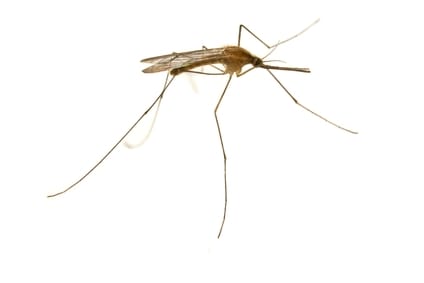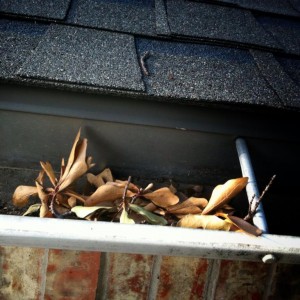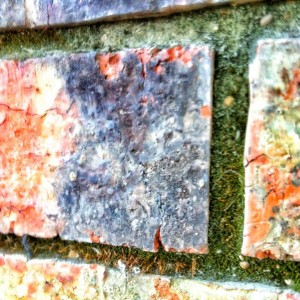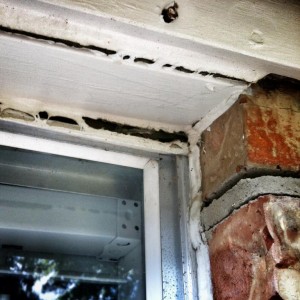With the return of students to school and football games to the TV, I am energized at the thought of cool, crisp, fall days. One obvious benefit of the changing of seasons is that lower temperatures will likely bring relief from the summer swarms of insects. Here in the Dallas/Fort Worth area, the threat of mosquitoes carrying the West Nile virus has changed the way we think about simple outdoor activities such as walking out to the mail box. Since many of us are taking extra measures to protect ourselves, it is a good time to consider protecting our homes from other bugs and pesky pests with these four steps.
1. Moisture: Don’t Let It Gather
While there’s no need to get into the sultry details, I’m sure you know that mosquitoes increase in numbers when given access to areas of standing water. The areas do not have to be large but allowing water to pond in old tires, bird baths, and toy dump trucks can create problems in just a matter of days. Also if there are areas that retain water such as clumps of old damp leaves, wet grass clippings, material in your gutters holding rain water, these need to be found and cleaned up. Take a quick walk around your property (wearing plenty of insect repellant, of course) and get rid of such breeding holes for these pests.
2. Moisture: Let It Escape
If you have a brick home, be sure that you do not close up the “weep holes” which are purposely placed to allow moisture trapped in the wall cavity to escape to the exterior of your walls. It is a common practice for home owners to cover these over with mortar or other substances to prevent insects from entering their homes. However, if this is done, the retained moisture in the wall can damage the wood and makes a perfect breeding ground and food source for insects. There are some products on the market that can be used to protect these openings to prevent insect infiltration but still allows air to pass.
The same concept applies when it comes to foundation vents. If your home has a crawl space underneath, then you have a pier-and-beam foundation (as opposed to a concrete slab or basement foundation). When visiting older homes I will often see evidence of metal panels covering the vents below the floor level at the exterior wall. The well-intentioned home owner installs (or just doesn’t remove) the vent cover to keep the under-floor air space warmer during the winter. However, the vents are there to allow the crawl space to breath and you can create untold moisture problems by closing off the vents. In large crawl spaces, we have even recommended electric ventilation fans to pull air from one side of the crawl space to the other.
3. Moisture: Keep It Out
Ideally we want any water that comes into contact with our homes to flow down and away from the structure. While you are doing laps around your house, check that the soil and landscaping is at least 6″ lower than the top of the concrete foundation. This will allow weep holes to do their job and help water to flow away from the home instead of inside to the crawl space.
I hope it goes without saying that leaky pipes should be repaired A.S.A.P. Unfortunately, it’s easier said than done because by the time a leak is discovered, it may have been dripping for quite a while. Wet wood is a smorgasbord for mold and termites.
4. D-fense! D-fense!
Ok, just wanted to see if you are paying attention… I’m not actually cheering at the football game. I am however, suggesting that you need a strong defense against letting the little varmints just walk right in. Insects can travel along the vegetation to get onto and into your home, so keep your trees trimmed and away from your house and the roof.
In the process of trimming vegetation away from your home, take a look at your doors and windows. It’s not unusual for caulk to shrink and pull away slightly from the brick or window frame. This is like hanging a welcome sign out for the local ant population to “come on in and stay a while.” Besides making my skin crawl just thinking about it, the gaps are also not doing the energy bill any favors by losing heating and air conditioning around the window frames.
If you integrate the above tips into your home maintenance routine, you should be able to keep pests at bay. If you are considering building a new home or adding an addition to your current home, please contact us at HPD Architecture, 214-751-2300. We can introduce you to specific pest control and prevention products intended to protect your investment.
Laura Davis is a registered architect and interior designer in the state of Texas and Colorado, and a founding member of hpd architecture + interiors. Laura's extensive experience includes residential as well as commercial and retail projects. She also has a particular interest in restoration, holding a certificate in Historic Preservation. She is energized by the character of older homes and the stories of those who have lived there. Responding to the needs of the current owner, while also honoring the personality of the original home is a delicate process to be enjoyed.





0 Comments